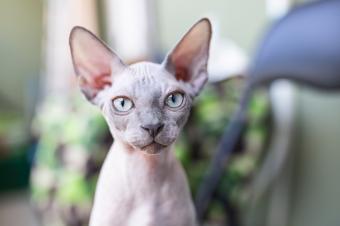
Himalayan kittens undergo quite a change in their first few weeks of life as they develop their colorpoints. Their final coloration is influenced by genes, but all Himalayan kittens are born white. Fascinating, right? If you're a fan of this pointed breed, you'll definitely enjoy finding out more about their color development.
Himalayan Cats Are a Color Division, Not a Breed
The Himalayan is not always considered a separate cat breed but rather a color division and a wonderful one at that. These felines were originally developed by crossing Siamese cats with Persians. The goal was to ultimately produce cats that carried the exquisite pointed coloring of the Siamese on a Persian-type body and long coat. Needless to say, the results have proven breathtaking, and Himalayans have been in high demand ever since.
How Himalayan Kittens Get Their Points
If you've never seen a litter of Himalayan kittens before, you might be a bit confused your first time, and with good reason. That's because Himmies aren't born looking quite the way they'll eventually turn out.
White Coloring at Birth
Himalayan kittens are all born a sort of creamy white color. To look at both parent cats, you might assume there's been some misadventure during the breeding season, but rest assured, this is completely normal.
Weeks 1 to 3
Within a few weeks of birth, darker pigment will start to creep in on the kittens' extremities, usually beginning with the nose and ears and gradually extending to the legs, foot pads, and tail.
Weeks 3 to 6

The main body of the kitten will remain light in color, but the points will continue to develop and should be fairly defined by six weeks old.
Months 2 to 12
Color points will keep intensifying over the kitten's first year of life. Their coat will reach its final color by about one to two years of age.
Temperature-Sensitive Genes
The reason for the color change is linked to a temperature-sensitive genetic mutation. Kittens have a consistent warm temperature while in their mother's womb, yet when they come out into the world, their color changes based on the temperature.
The extremities are farther away from the heart and, therefore, slightly cooler in body temperature. The darker fur is believed to absorb and hold heat better than the lighter fur and so is better able to keep these parts warm.
Seasonal Color Differences
The richness of the Himalayan colors may also vary slightly from one season to the next. The points seem to be especially well-defined during winter due to the colder temperatures while fading a bit on some cats during warm summer months.
Determining Adult Himalayan Cat Color
Although seasoned breeders have a good idea of the point colors a given breeding will produce, it isn't always easy to determine a particular kitten's coloration for weeks and sometimes months after birth. This is especially so for similar colors.
Here are a few tips to help predict Himmie colors:
Seal Points
Seal points carry seal brown pigment on their noses and foot pads.
Chocolate Points
Chocolate points show cinnamon brown colored pads and noses.
Blue Points
Blue points have slate blue noses and pads.
Blue Cream Points
Blue cream points have similar coloring to blue points, but the pigment will be mottled with pink.
Lilac Points
Lilac points carry lavender pink pigment.
Tortoiseshell Points
Tortoiseshell points are similar to seal points, but the seal brown pigment is mottled with pink flesh tones.
Flame Points
Flame and cream points are nearly indistinguishable in young kittens. The only sure thing is that two dilute-colored parents cannot produce a flame-point kitten.
Health Concerns With Himalayan Kittens
Himalayan kittens, like other flat-faced breeds, sometimes encounter breathing difficulties due to their shortened breathing tubes. They are also slightly more prone to respiratory illness, so it's important to keep them out of drafts until they come into full coat.
Himmie kittens may also tend to have runny eyes, just like their Persian relatives. A careful wipe once a day with a warm, damp cloth should remove any matter or crust and keep your kitten looking fresh and beautiful. Excessive crusting may be evidence of an eye infection, and should be looked at by your vet.
Himalayan Kittens Make Beautiful Pets
Himalayan kittens are as interesting as they are beautiful. With their color variations and fluffy fur, they make adorable pets, and it's fun to learn about the genes responsible for their unique coloring.







